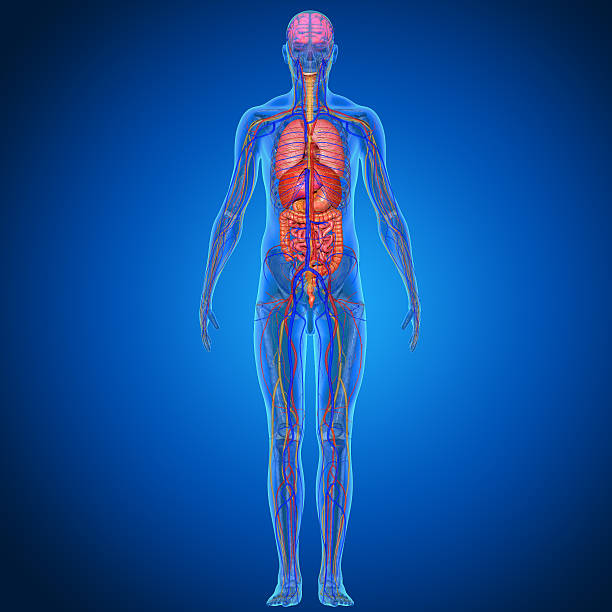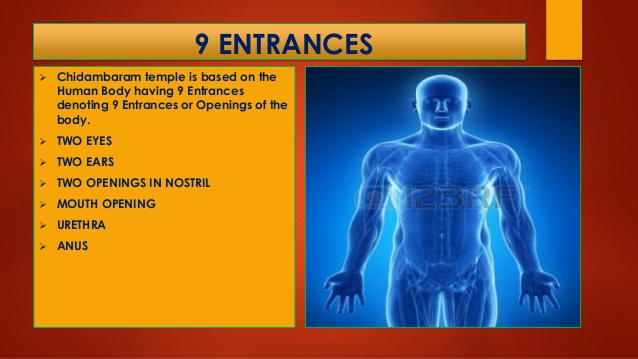The word “Nava” has various meanings in English, Hebrew, Farsi and other languages. According to Sanskrit, the word “Nava” means nine and the word “Dwara” means a medium of exit or entrance. As a result, Nava Dwaras mean the nine openings. However, in this context, Nava Dwara is referred to the openings in a human body.
There are several theories of science, philosophy, and religion related to our bodies. The human body has a total of nine gaps which includes two eyes, two ears, two nostrils, a single mouth, one genital and one anus. These Nava Dwaras are also known as the nine gates.
9 Openings In Human Body
The opening is generally referred to an entry point. The openings in a human body have a vital role in our life. They have a major contribution to our daily existence. We can see using our eyes, hear anything audible through our ears, breathe through our nose, taste and eat by our mouth and eventually defecate and urinate through our rectum and orifice respectively. The nostril also discharges wastage when we are affected by the cold. Our ears also discharge ear wax; our mouths also dissipate when we have a cough or vomit.
All of these functions of the Nava Dwaras are initiated through our brains. It is obvious that we already know the uses but the significant role emerges as for when the nine gaps combine with our sensation. According to medical science, our vision, hearing, breathing, tasting, and defecation are all interconnected through our brain. Hence, psychology suggests that the maximum utilization of our senses can also be obtained if our mind is able to reach the zenith through Nava Dwaras. If we focus at this from a different perspective, we can deduce that our five senses of gathering knowledge are the combination of our eyes, ears, nose, and tongue combining with our flesh. Similarly, our anus, genital, mouth combined with our arms and legs creates action or work. The birth and death of a person are also related to the number 9. It is estimated that a child takes around 9 months to be born which is known as Nava Maasa.
Our mind is always in charge of monitoring these nine gates. If we consistently meditate or do yoga, we will be successful in maintaining these gates properly. Moreover, the 9 gates are nowadays used as a reference in order to produce several medical solutions. Acupuncture, a very promising and popular medical solution, has achieved its success by utilizing the openings. Acupuncture is a form of pain reduction procedure. The treatment involves the insertion of needles at certain pressure points which are linked with any of the nine openings. As a result, stress and ache are relieved through transmission of energy to the openings.
Scientific research has clearly proven that lucid dreaming is interlinked with the nine openings of our bodies. In philosophy, the human body is also mentioned as the iconic city of nine entrances because of these nine openings. Indian literature has stated that there is one more gate. The tenth gate has been kept hidden. The tenth gate lies in the core of our heart. It is said that the doors of the gate will lead us to the Lord.
A toxic person with evil senses will never achieve spiritual wisdom through the human body. The tongue of such an individual is considered to be impure. Consequently, their speech will also be impure. Their eyes have filthy and greedy gazes over materials and assets of others. They prefer hearing about flattery only and their bodies crave for lust. Even though the nine openings are functioning but such individuals are still not awake inside their mind. Hence, our evil senses of the nine openings can cause us to remain spiritually ignorant. Therefore, the spiritual optimist can be achieved through proper usage of the nine gates.
Nava Dwaras And Religion
Hinduism has several Lords who have previously commented about the Nava Dwaras. There have been several explanations provided which generally portrays the human soul to be a living element in the middle of nine gates. The actions of the body are conducted by its certain natural modes but our soul has the capability to go beyond these boundaries if required. According to Krsna responsiveness, our soul has the ability to step outside and revive back to its original destination. During this time, the sensation of the Nava Dawara is considered to be numb. As a result, when an individual reaches to Krsna alertness, he is completely detached from physical actions. Therefore, in this controlled order, he lives gladly within the region of nine gates. Svetasvatra Upanisad has explained this to be an independence of the human soul when someone identifies the Lord within himself.
Buddhism has a similar perspective of the nine openings. The striving to reach the tenth gate is also present. There have been several reports that monks use Nava Dwara as a medium to cure illness. The state of nirvana might also be achieved by using Nava Dwara as a reference during meditation. Nava Dwara has been present in Buddhism from the very beginning.
Sikhism also has a rigid belief on Nava Dwara but it says the tenth gate only opens in the base of God. On the other hand, Islam has not specified anything, particularly about the nine openings. Although it is mentioned in the Quran that all Muslims shall be judged upon whether they misused their eyes, ears, nose, mouth and the other parts.
There are several controversies related to Nava Dwara but scientifically it has been proven that our nine openings are a major asset to us. Everyone has the freedom either to abuse or use anything properly. We can use our eyes to see our surroundings but only our conscience can determine good or evil. The liberty to make good use of Nava Dwara lies within us. We must coordinate properly with our mind and Nava Dwara in order to obtain the best consequences.
- The Namagiri Thayar Mantra – For Wisdom, Creativity & Prosperity - April 29, 2024
- Krishnashtakam – “Krishnam Vande Jagadgurum” – Lyrics & Meaning - April 4, 2024
- Karadarshanam – “Karagre Vasate Lakshmi” – Meaning & Benefits - March 26, 2024



VERY INTERESTING, and TAKES ONE BEYOND THE BRACKETS.